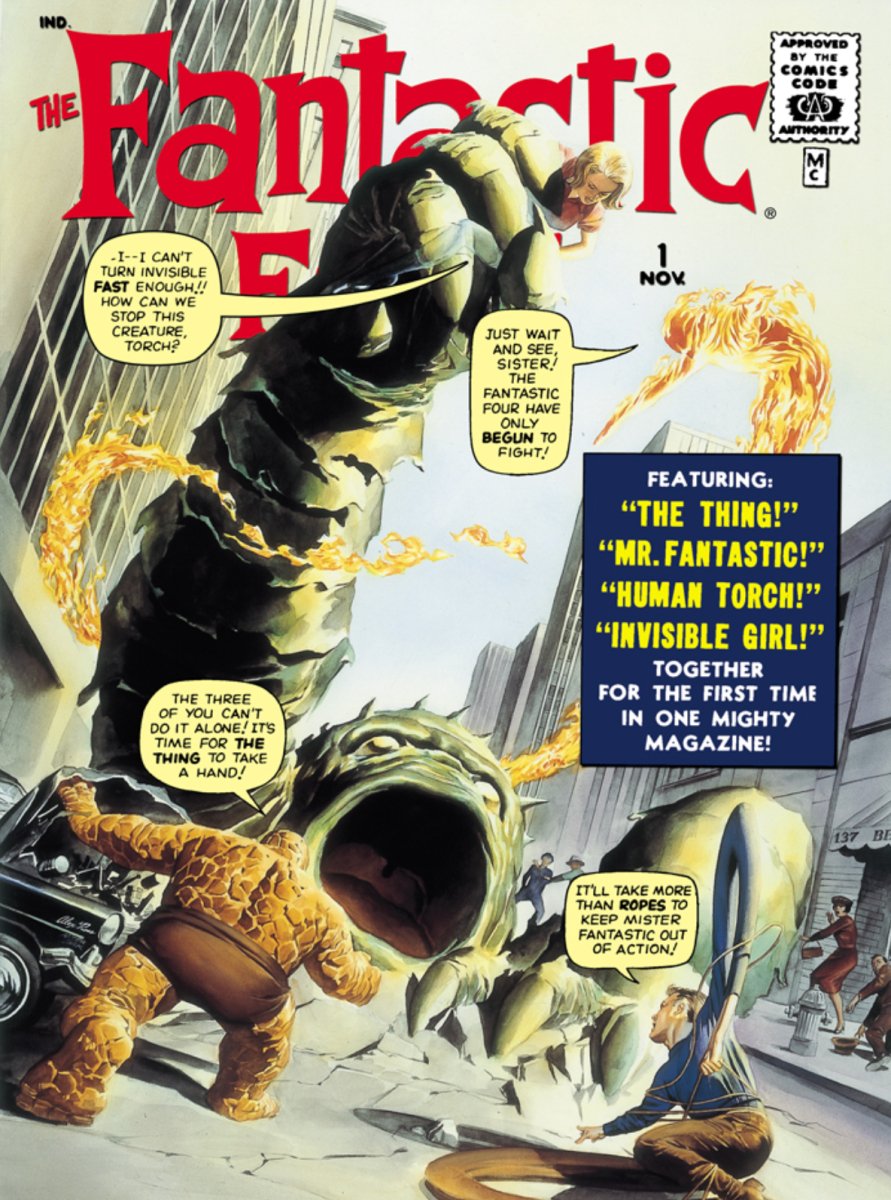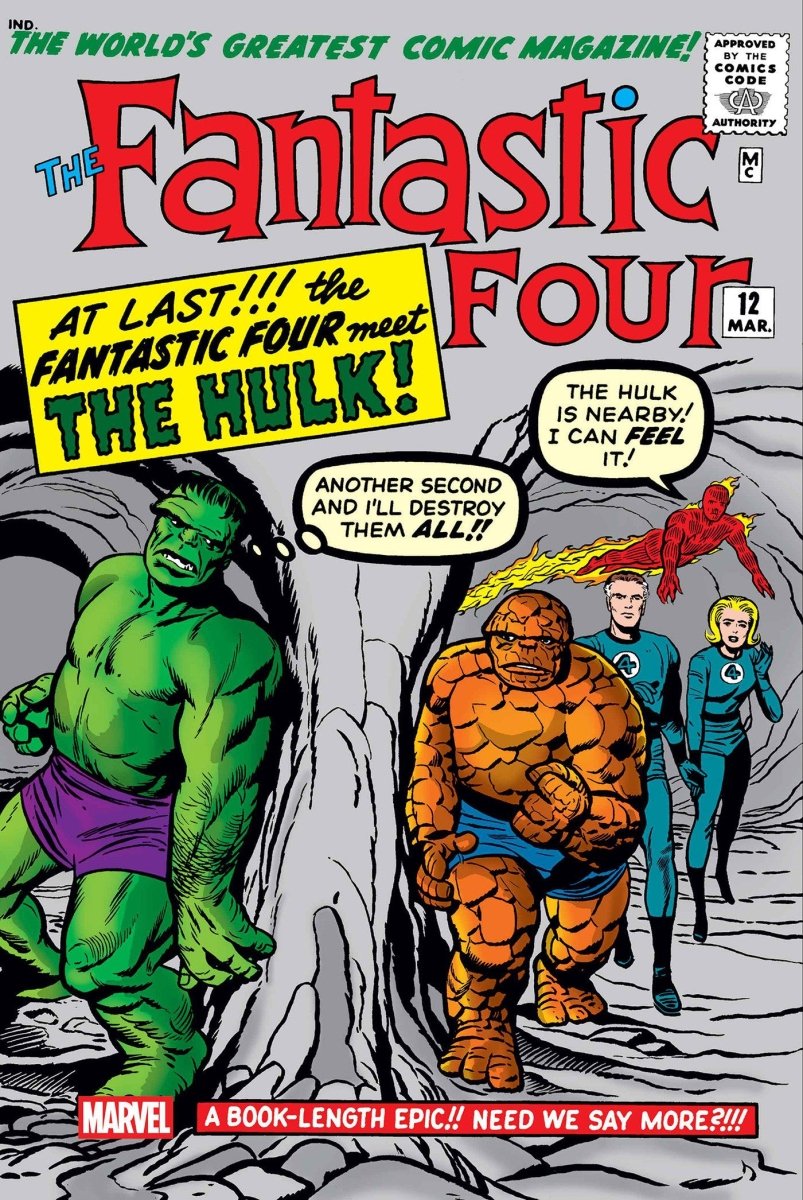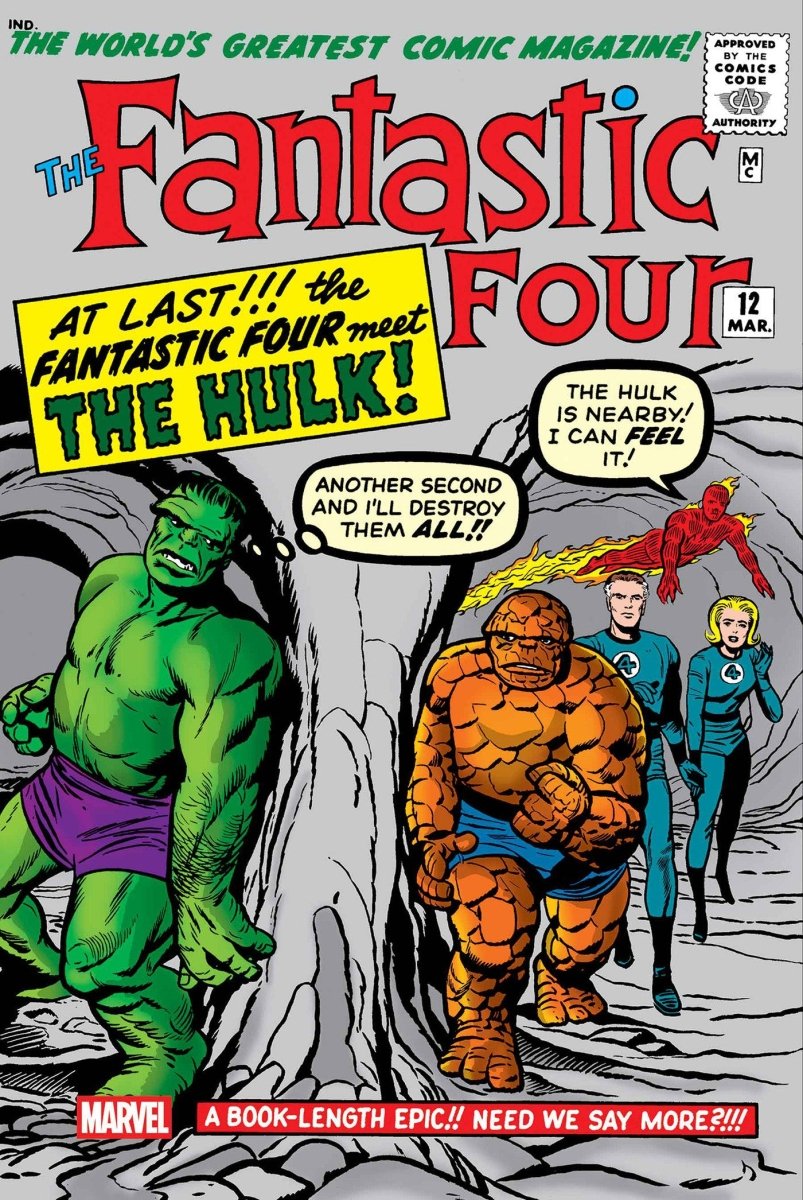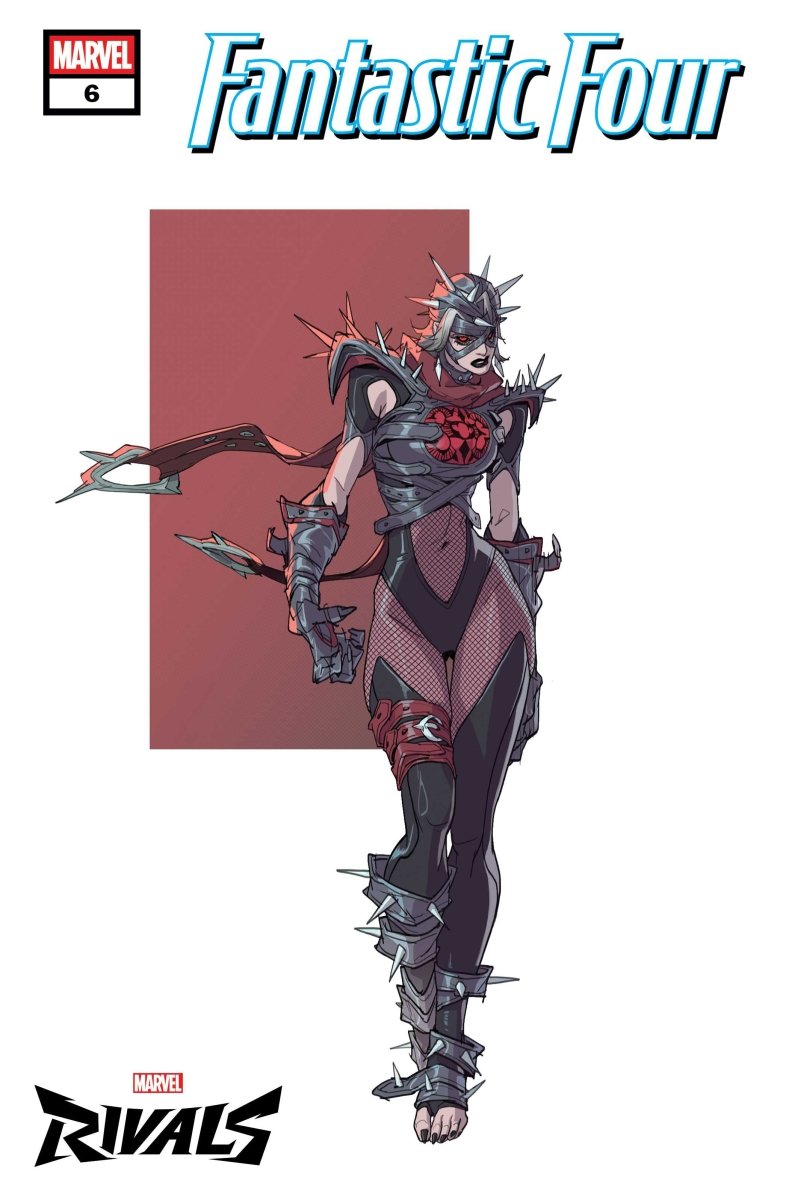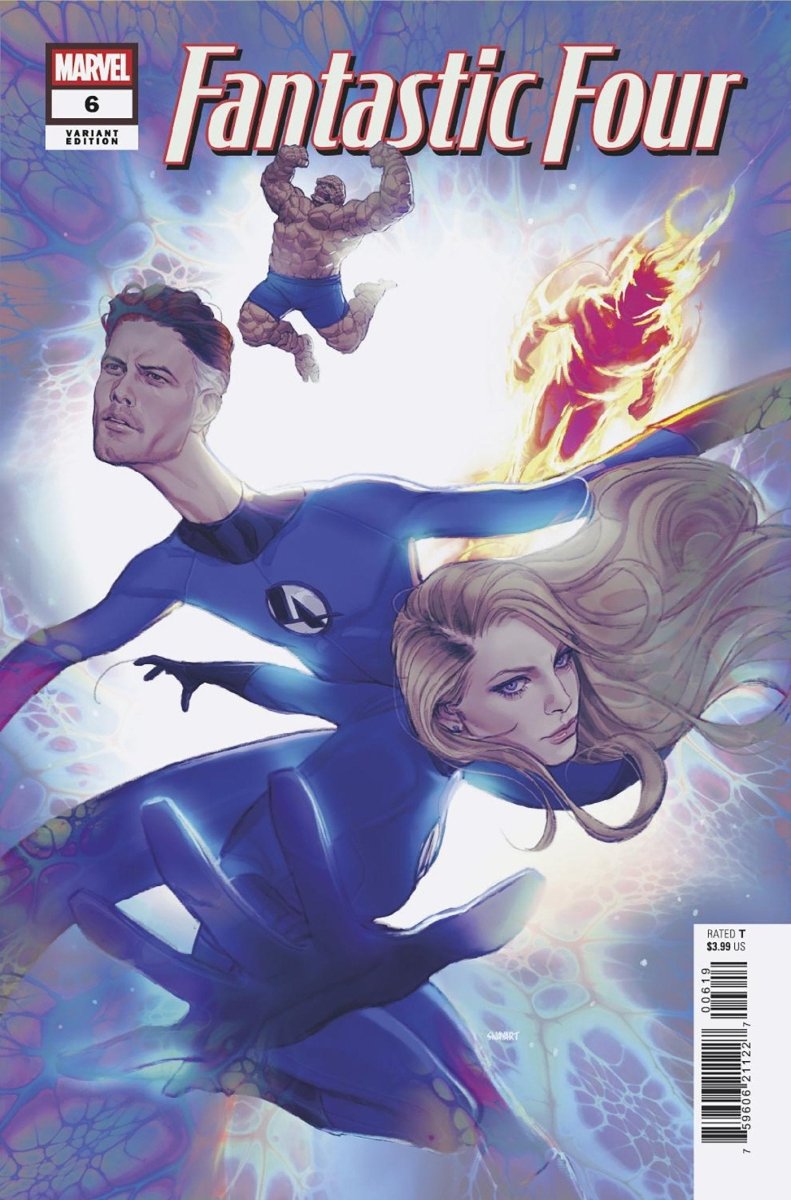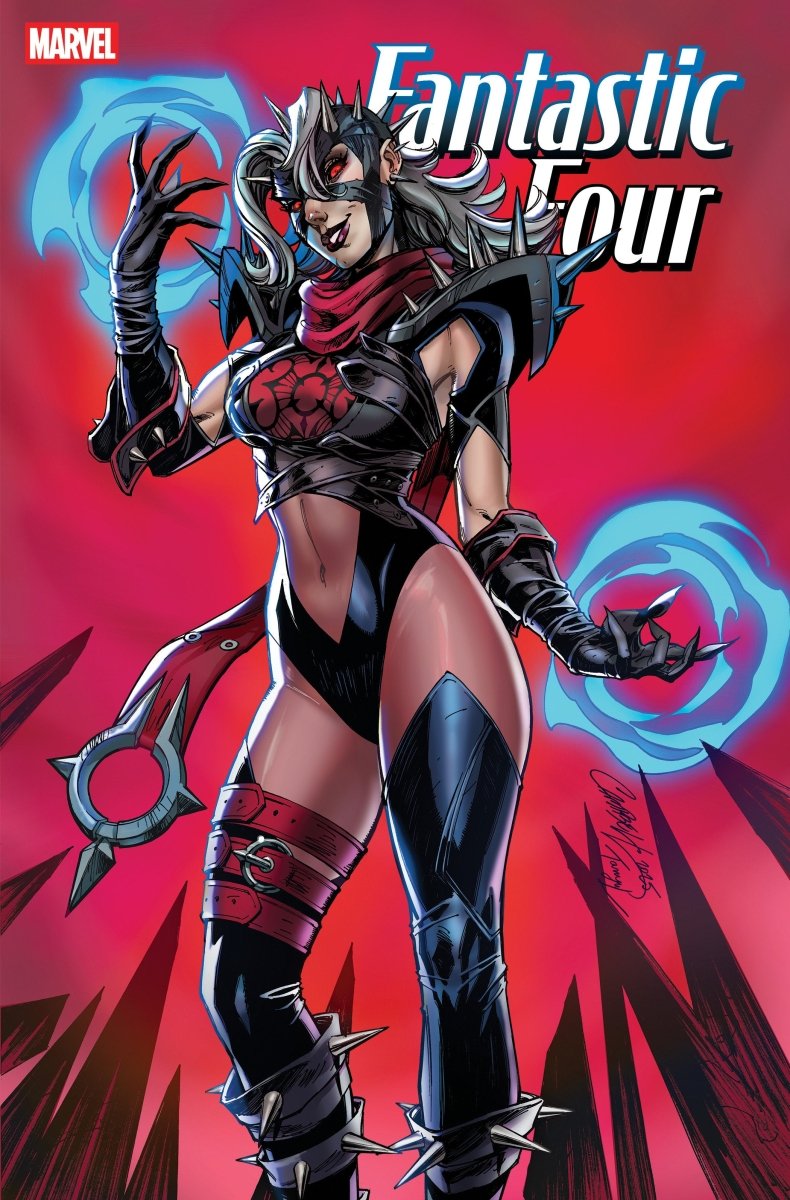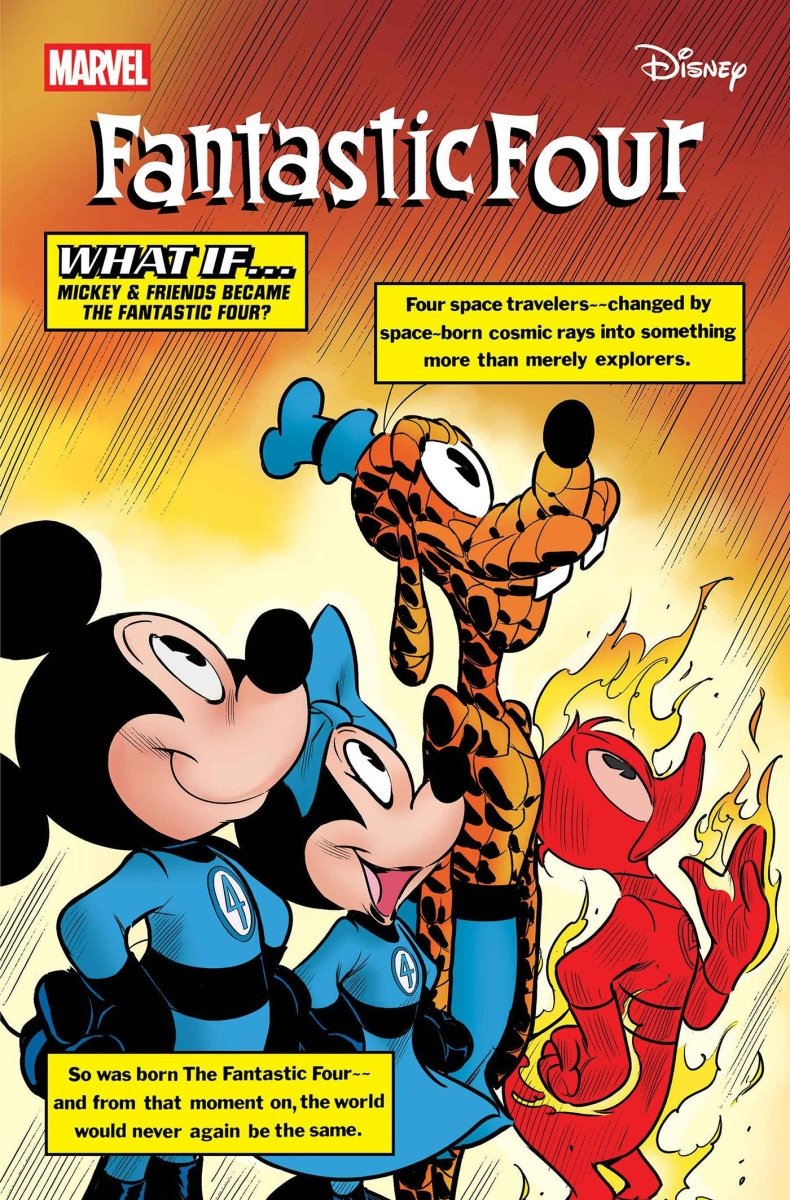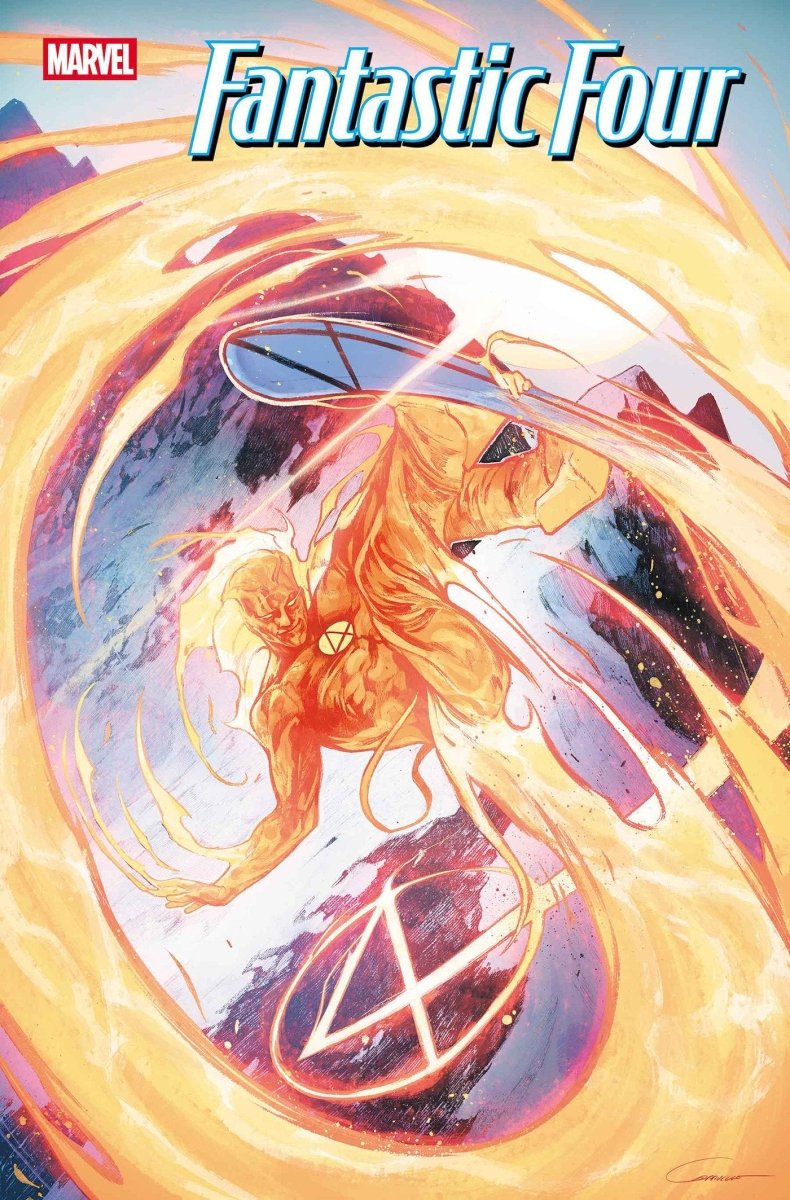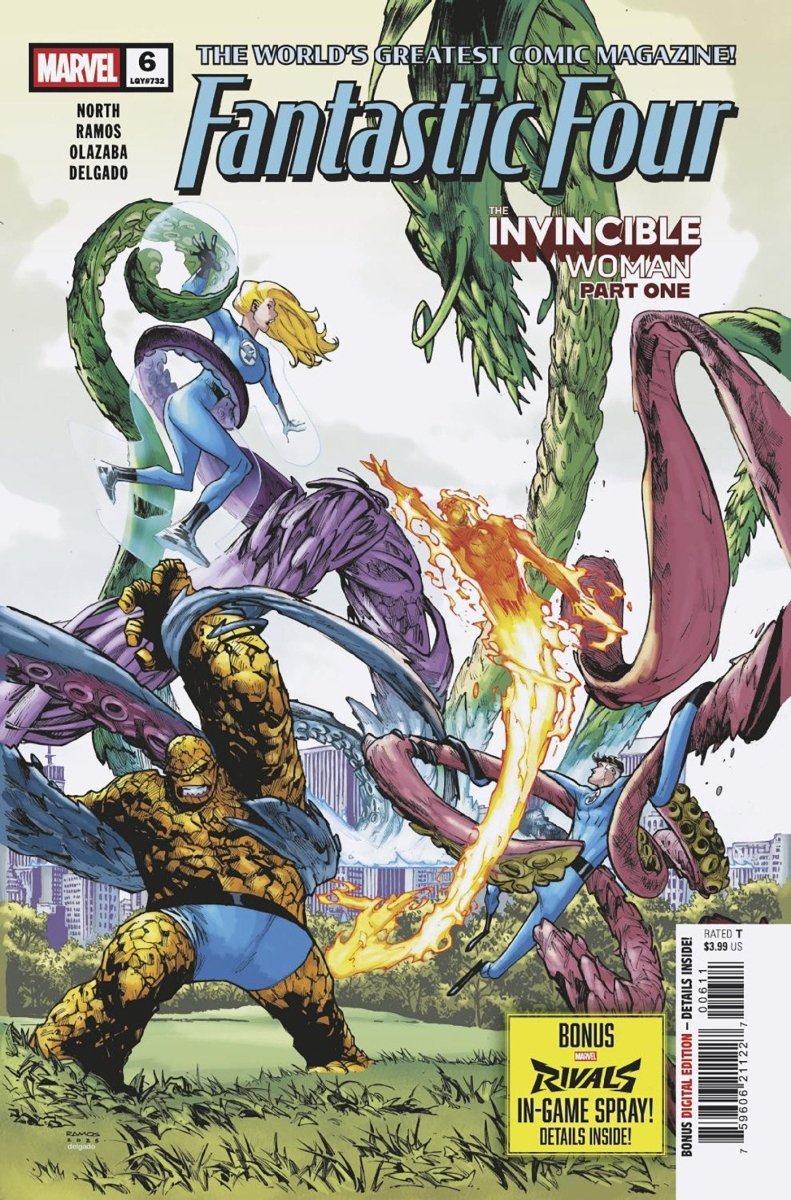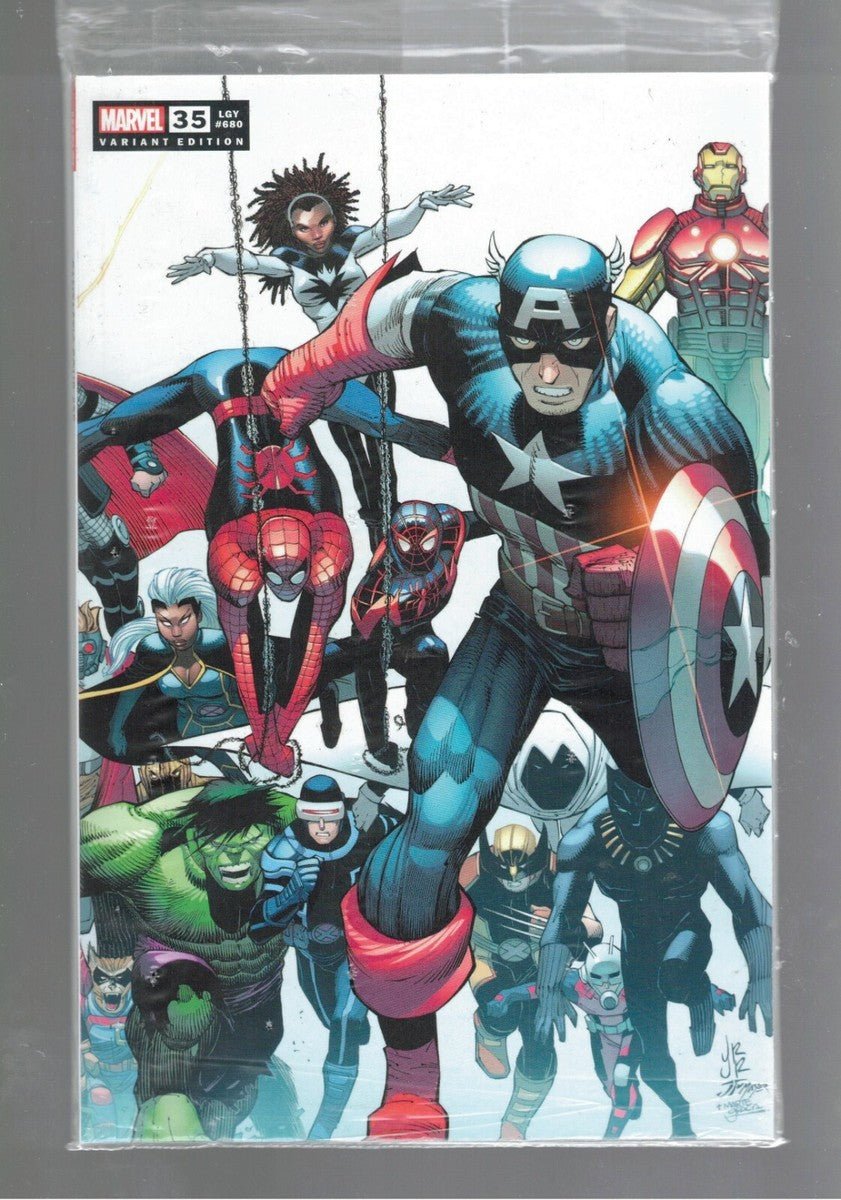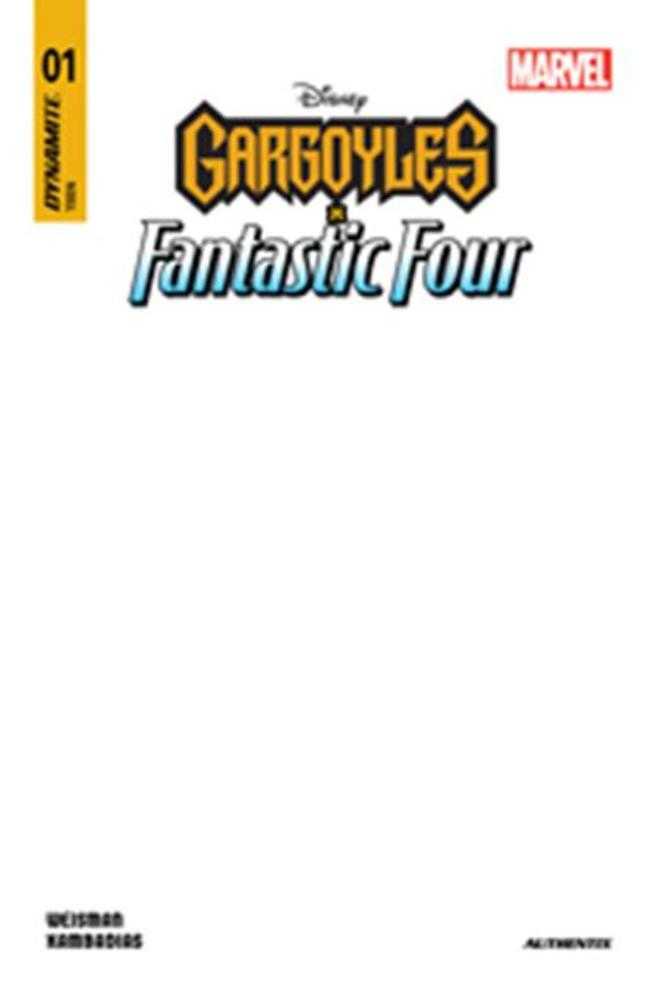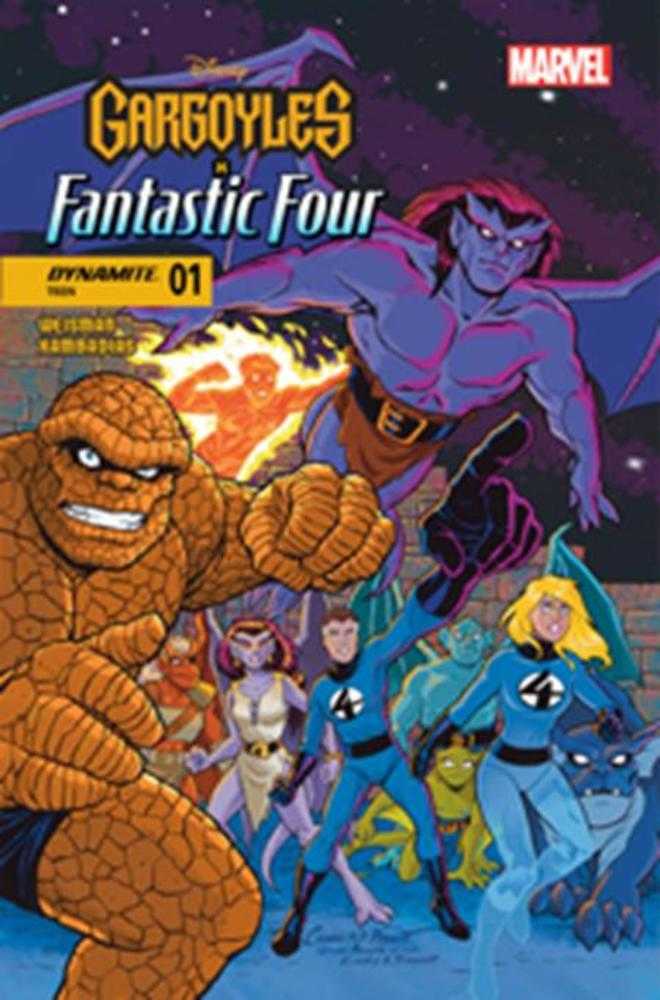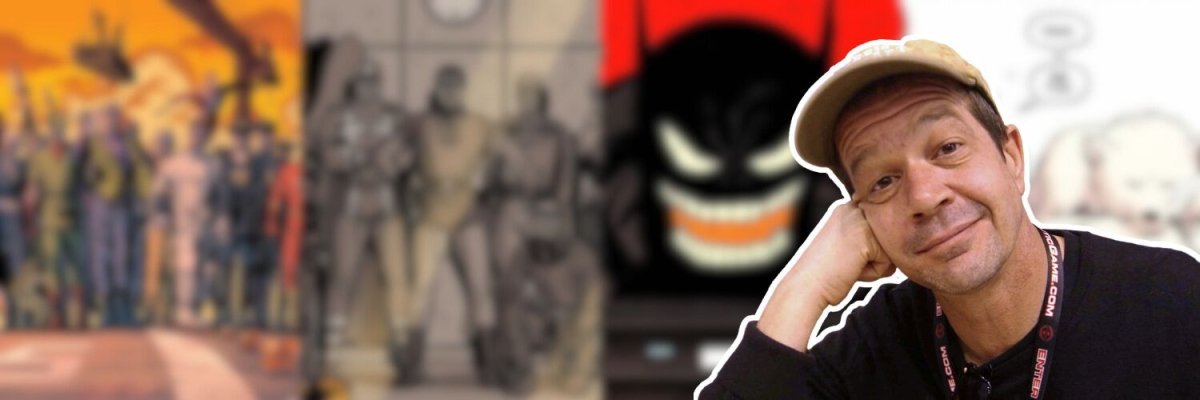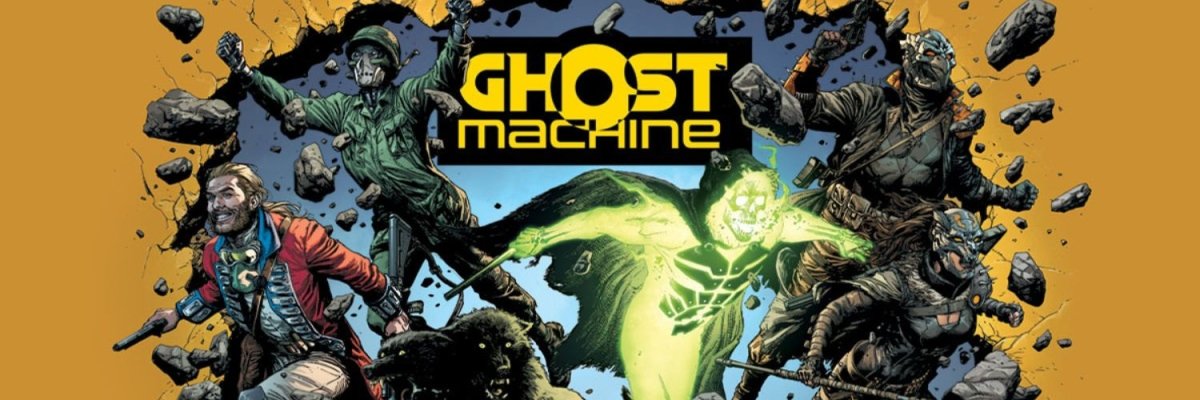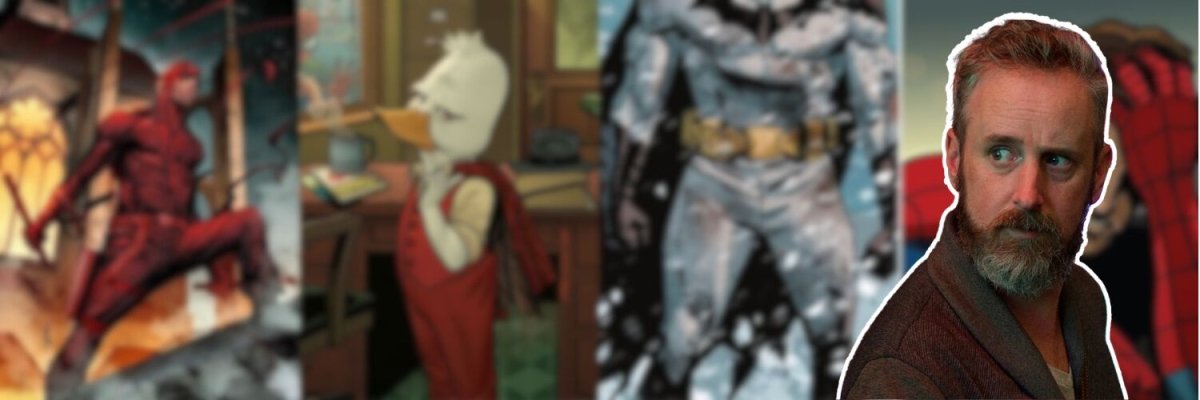Well (you know I’m gonna do it)... uhnn (yeah, it’s coming), it’s Clobberin’ Time here at Walt’s for our last Fantastic Four deep dive.
And we didn’t leave this guy for last for any reason other than the sheer volume of material he has. Ben Grimm is Marvel’s tragedy, he’s the only one condemned to live with his powers visible on his skin. But he’s also the funniest, most lovable character Marvel has ever created. Named after a tragic creature from pulp horror, Ben is the team’s heart, and it’s an open heart, nonetheless. Ready to be used for good, but also ready to be taken advantage of.
Let’s dive into what makes this guy so special, after all.
The Thing Going Solo by Petar
Here’s the thing (I had to do it, okay!) – while the Fantastic Four is known as a family unit, its members have been known to go off on solo adventures from time to time (as we’ve learned in the past few weeks). And who would have guessed that Ben Grimm would be the first member of the Four to have his own solo ongoing series?
And yes, I know what you purists will say: “Well, actually, Petar, Johnny Storm had a regular solo feature in the pages of Strange Tales from issue #101 all the way to issue #134.” To which I say: “I know, I know! BUT – Strange Tales was a creature-feature sort of book, showcasing different parts of the Marvel universe. Meanwhile, our boy Ben had HIS OWN book going for him. So I dismiss your retort, you nerd!”
Anyway, this is what the fabulous Two-In-One book is all about! After the success of Spider-Man’s Marvel Team-Up, which saw him join forces with a different character in every issue, Two-In-One had the Thing teaming up with (and sometimes going up against) various figures from the mighty Marvel mythos. You had Ben paired with the Man-Thing, Namor, Daredevil, Captain America, the Guardians of the Galaxy – and that’s just the first five issues!
And what legends worked on these stories – you had people like Steve Gerber, Chris Claremont, David Michelinie, Sal Buscema, John Byrne, Frank Miller, Jim Starlin... So many masters of the craft contributed to the mythos of Ben Grimm, making him such a lovable character. That’s why I’m extra excited for the Marvel Two-In-One Omnibus Volume 1 coming out in June (since the Epic Collections currently only offer Volume 2: Two Against Hydra and Volume 3: Remembrance Of Things Past).
The Thing Omnibus
But Ben Grimm couldn’t be stopped there – as soon as Two-In-One ended, he got his own name on the cover when The Thing launched. The series (initially written by Byrne and later by Michael Carlin) paired Ben’s wacky adventures with a grounded look at his identity and humanity. This is also the story where Ben becomes a professional wrestler, donning that awful singlet and boots (I will not hear more about them). And yet, we also get an exploration of what it means to be human, and to be seen as a monster. This story was collected in The Thing Omnibus.
After The Thing ended in 1986, Ben wouldn’t have a solo series for over 15 years. However, the ever-lovin’, blue-eyed Thing was not forgotten, and the early noughties saw three different Thing minis! First was The Thing: Freakshow in 2002, written by Geoff Johns with art by Scott Kolins. It follows Ben on a train journey across the U.S., where he confronts the sins of his past. The second came in 2003 – The Thing: Night Falls on Yancy Street by Evan Dorkin and Dean Haspiel – with a darker, more psychological approach.
The Thing and Human Torch
But it was Dan Slott’s 2005 run on The Thing that will forever stay in people’s minds and hearts. Joined by artists Andrea Di Vito and Kieron Dwyer, Slott tells the story of Ben Grimm becoming a millionaire and learning to navigate this new status quo as a beloved working-class superhero. Fans were gutted when the series was cancelled at issue #8, and no petition could save it – but it was collected in The Thing and Human Torch by Dan Slott trade.
Another Two-In-One series, written by Chip Zdarsky, took place after Secret Wars, showing what happened when the team was split in two – Reed and Sue exploring the multiverse, while Ben and Johnny had to deal with the consequences of staying on Earth. It was collected in two trades: Volume 1: Fate of the Four and Volume 2: Next of Kin, as well as a larger 2-in-one trade and hardcover edition.
The Thing and the Avengers
Ben also appeared as part of the New Avengers in the 2010s. Mind you – this was the second iteration of the team, so it hasn’t been widely collected yet, aside from the now-discontinued New Avengers by Brian Michael Bendis: The Complete Collection Volumes 6 and 7. He was also written by Bendis in Guardians of the Galaxy, which, again, hasn’t been collected extensively (you’re looking for Volume 4 from 2015, with four trade paperbacks and two hardcovers floating around in the wild).
After this, Ben would get a few more solo outings – it seems like he’s the most versatile character when it comes to that. In 2021, Walter Mosley and Tom Reilly delivered a bombastic six-issue run that pitted the Thing against both space threats and the dating world, showing why Ben will always be The Next Big Thing! And finally, Clobberin’ Time in 2023 by Steve Skroce called back to Marvel Two-In-One, with Ben teaming up with different characters in a five-issue run, completing the solo outing circle.
Thing Reborn by Petar
Throughout all of his stories (or at least – the best ones), certain themes always follow Ben Grimm: identity, what it means to be human, and accepting your body, your appearance, and your powers. The topic of Ben regaining his human form recurs throughout Fantastic Four publications, with almost every writer feeling the need to explore it and leave their imprint.
And it wouldn’t be a Fantastic Four article without me writing about Hickman, because – as usual – he shook up the formula in just the right way! (This story is collected in Fantastic Four Complete Collection Volume 2 and Fantastic Four by Hickman Omnibus Volume 1).
In issue #584, Reed finally discovers a formula that allows Ben to become human again – stripping him of his powers. There’s a limit, though: it only lasts one week each year. Of course, Ben is overjoyed even with this small window – he can finally feel the breeze on his skin and hold Alicia without worrying about hurting her.
It – of course – takes an ironic turn when the second shoe drops, and Ben is helpless to save a member of the team due to the loss of his powers. The silent issue that follows (issue #588) shows Ben dealing with grief the only way he knows how – by using his fists on both Thor and Hulk, ending with a page that always breaks my heart.

And that’s how you write Ben Grimm – he might be rough on the outside, but the man has a heart of gold. Through all his hardships, he continues to learn and grow.
The one-week-a-year status quo remains to this day. In Fantastic Four by Dan Slott, Thing and Alicia’s getaway week is interrupted by the Hulk... with just a minute left on the timer before Ben becomes human. Situations like these never seem to evade poor Thing – and sometimes, it feels like he has even worse luck than Peter Parker!
The Mandatory “Beauty and the Beast” by Matheus

If you’re talking about Ben Grimm, you’re talking about Alicia Masters. In commenting on their love story, we also extend the deep dive to Alicia – member number five of the best team ever created in comic books. It’s easy to draw the Beauty and the Beast comparison here, because of course that was the idea behind it. Ben feels like a monster, but he finds Alicia – a blind woman (another obvious parallel) who is also a sculptor. And in the midst of this, they find love. But I think it goes beyond that.
Alicia is also a tragedy trying to become something else. It’s easy to forget – she’s the daughter of a villain (Puppet Master), so she, too, feels condemned and violated. Her father’s whole deal is about control, about manipulating others. It’s easy to see yourself as an extension of that control. To see yourself as a monster. And I think that’s where she and Ben truly find love. They find it in the defiance of perception – of what they’re supposedly condemned to be. Ben defies that every day by being the opposite of a monster; he’s a man willing to lose everything to save someone. And Alicia defies whatever life throws at her because, well… she makes art.
What is art, if not the opposite of control? Art is the permission to go, to look beyond, to see past concrete ideas and find meaning as far as your mind can reach. The sheer opposite of condemnation, art is defiance. And what else is defiance, if not being a hero in a world drunk on hate? They are not a tragic love story – they’re a story of people making love out of tragedy.
Their story will forever hold a special place in my heart because it deeply influenced the way I see love. I see it as an alliance against a world determined to decide who we should be. An alliance against being condemned.


One of the comics I want to give a shout-out to is Dan Slott’s Fantastic Four run. It’s a run that gets a bad rap, but one that, in my opinion, comes from a good place. For all its faults, it’s clear that Dan has nothing but love for these characters.
His run may have been the most significant in finally advancing Ben and Alicia’s story. He gives us the long-awaited and well-deserved Alicia and Ben wedding in Fantastic Four: Wedding Special #1 (of course with its fair share of comic book surprises), and introduces their adopted kids – Kree boy Jo-Venn and Skrull girl N’Kala – in the fallout of the Empyre event. There’s nothing more meaningful than having a Kree and a Skrull as a symbol of a love that defies convention and pre-determined fate. I also love that the kids continue to shine in Ryan North’s current run.

Hopefully, there will be an omnibus of Slott’s run someday. In the meantime, you can find it in the hardcover collections: Volume One (which includes the wedding story, though unfortunately out of print), Fantastic Four By Dan Slott Vol. 2, Fantastic Four By Dan Slott Vol. 3 (where Ben and Alicia adopt the kids), Fantastic Four By Dan Slott Vol. 4, and his year-in-the-making and barely talked about Reckoning War, which ties up his run. You can also find the full event that introduces the kids in the Empyre Omnibus (which also features the other awesome couple, Wiccan and Hulkling).
Attention – Big spoilers ahead!
Seeing their creator by Matheus
My favorite comic book moment ever comes from Mark Waid’s time with the character.
It starts with Doom – as most things often do. And it ends with a death – as most things also often do.
It’s a story built on things these characters often face. Ben sacrifices himself to save the day (and dies). Reed feels guilty and can’t let go. But this isn’t a typical comic. This is a story about going beyond. And Mark Waid goes beyond.
Our heroes of the impossible – the Imaginauts – then decide to go to heaven (using Reed’s technology) to bring Ben back. The issue is a beautifully written exploration of science vs. faith, the impossible vs. perseverance, and guilt vs. acceptance. These are all themes that, in my opinion, define the Fantastic Four both as characters and as a title. And then there's the question of God. How do you convince God that Ben shouldn’t be there? More importantly, how do you show God in this story? What is God in a world full of impossible things?
Well, it’s Kirby. Or an image of him.
Jack Kirby is, of course, the co-creator of these characters. So it makes perfect sense that this is the image of their metaphysical creator. And if you roll your eyes at this, I get it – but I promise you, it’s a beautiful choice by Waid. It’s a metaphysical swing, sure, but that’s Fantastic Four through and through.
And it’s special because they’re there to rescue the Thing, a character Kirby very much drew from his own life. A gruff, working-class New Yorker from the Lower East Side, transformed into a rock-skinned powerhouse by a cosmic accident. Ben’s most defining trait is pathos. He didn’t want to become a monster. He’s proud, selfless, wounded. He jokes to hide his pain. And he never stops protecting his family.
Jack Kirby was also a tough kid from New York’s Lower East Side – raised in poverty, scarred by war, and constantly fighting for dignity in an industry that often exploited him. Kirby can be seen as an outsider: a short, tough guy in a world that didn’t always respect artists or immigrants. He poured that frustration into the Thing’s tragic transformation. Ben Grimm is a man cursed by his monstrous form, longing to be accepted, yet he never stops being good. He becomes a hero by staying true to his moral code, no matter how much pain he feels. Ben Grimm’s struggles aren’t so far removed from the Jewish immigrant experience Kirby lived through as a kid.
Comic book characters – and superheroes in particular – can be silly sometimes, but they are also vessels through which happiness (and that very silliness) become tools for dealing with pain. And how often do we open a comic book to cope with something just like that?
In the midst of this, Ben is given a choice: to stay in heaven, to have peace – or to return to Earth, to return to the possibility of struggle and the possibility of doing good. And who else could speak with authority about the value of Ben Grimm’s life but the man who made him?

Waid and Wieringo were reaching for something sacred, not necessarily in the religious sense, but in the deeply personal sense of gratitude toward another artist who chose to open himself up on the page. And because of that, he gave us something people will forever feel connected to.
This parallel is very much Ben’s story. Of course he chooses to come back to life. And that last panel will forever be evergreen in my mind.
You can find this story in the complete Fantastic Four by Waid & Wieringo Omnibus (my favorite run ever for the team), or dive into the first arc alone in the recently reprinted trade paperback.
------------------------------
That’s it for Ben, and that’s it for our Fantastic Four special on Beyond the Panels. We’re all very excited for the movie, and it’s been an honor to have you with us each week for this deep dive. Hopefully, we’ve helped you understand a bit more about why we love these characters. Thank you so much for reading – and see you on the next journey.

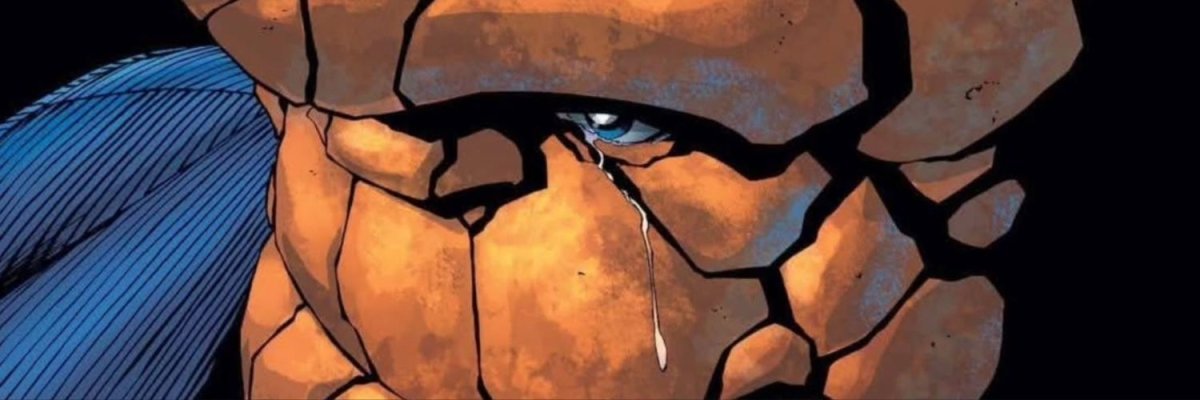
![Fantastic Four By Jonathan Hickman Omnibus Vol. 1 HC Davis Final Issue Cover [New Printing, DM Only] - Walt's Comic Shop](http://waltscomicshop.com/cdn/shop/products/fantastic-four-by-jonathan-hickman-omnibus-vol-1-hc-davis-final-issue-cover-new-printing-dm-only-273691.jpg?v=1696022447&width=836)
